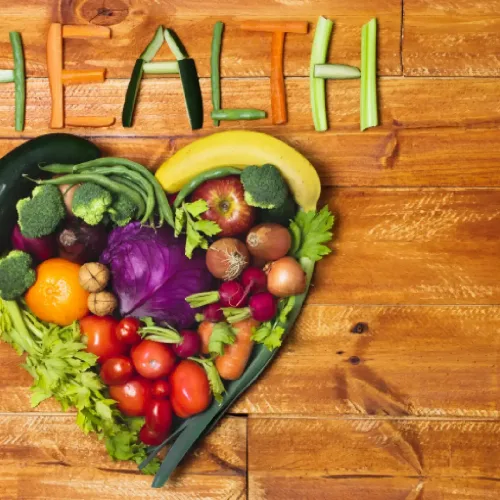Living in a city or urban area does not have to mean giving up on your dreams of growing your own fresh, organic produce. Even with limited space, there are plenty of creative ways to incorporate small scale organic farming into your lifestyle. In this post, we’ll explore some of the best small space solutions for urban organic gardening.
Why Choose Organic Farming in Small Spaces?
The health impacts of organic farming are significant, especially in small spaces. Organic farming is better for the soil, uses less pesticides, and helps nature. By focusing on natural processes and biological inputs, small scale farmers can produce nutritious food while reducing their environmental footprint.
Benefits of Small Space Organic Farming
Organic farming in small spaces offers numerous benefits:
- Healthier Produce: Organic farming avoids synthetic pesticides and fertilizers, resulting in healthier, chemical free production.
- Sustainable Practices: It emphasizes composting, crop rotation, and natural pest control, which enhance soil fertility and sustainability.
- Biodiversity: Organic farming supports a diverse ecosystem, attracting beneficial insects and promoting plant diversity.
- Cost-Effective: Growing your own organic produce can reduce grocery bills and provide a reliable food source.
Effective Techniques for Small Space Organic Farming
Several techniques can help maximize yields in small spaces.

1. Vertical Gardening
Limited ground space does not need to limit your ambition to grow organically. Vertical gardening, trellises, hanging baskets, and wall mounted planters are all structures that can allow you to go up instead of going outside. It is perfect for herbs as well as beans, peas, cucumbers, lettuce and other greens.
Vertical gardens also ensure that plants are effectively exposed to sunlight, which is important for plant health, especially when they are cultivated in urban areas and some other places where plants are grown in shady conditions. With a little creativity, it’s possible to turn even the smallest balcony or patio into a living, vertical, organic farm.
2. Container Gardening
One of the easiest and most common methods of organic farming in confined urban spaces is container gardening. Using pots, planters, and other types of containers, one can grow a variety of fruits, vegetables, and herbs, as well as some lesser trees and shrubs. Great container products include tomatoes, peppers, lettuce, radishes, and carrots. You can also try growing compact bush varieties of zucchini and cucumber. The main success for container gardening derives from the correct choice of container size, pouring in good high-quality organic potting soil, and providing for drainage. Research the plants you’re growing so they can fit into the container environment.
3. Square Foot Gardening
Square foot gardening divides the growing area into small, manageable sections. This method optimizes space and increases yields. By planting in square feet squares, gardeners can efficiently utilize their available space and cultivate a variety of crops. This technique is especially useful for beginner gardeners, as it simplifies the planting process and makes it easier to plan and maintain the garden. Rotating thick and thin crops improves soil health and productivity. For example, follow a harvest of leafy greens with root vegetables to maintain soil balance.
Practical Tips for Success
- Use high quality, organic soil and compost to ensure nutrient rich growing conditions.
- Implement efficient watering systems, such as drip irrigation, to conserve water and reduce runoff.
- Utilize natural pest control methods like companion planting, beneficial insects, and homemade sprays.
- Choose crops suited to your space and climate. Fast-growing, high-yield varieties are ideal for small areas.
Overcoming Challenges in Small Space Organic Farming
Organic farming in small spaces can be extremely pleasing and similarly challenging. The use of vertical and container gardening enables every inch of garden to be used. You can monitor the plants from time to time and manage them for any pests through several biological measures. The use of rotational crops and lots of organic matter can be very useful in adding fertility to the soil.
Try various innovative ideas like using hanging baskets and tier planters to grapple with space limitations. Prune and train the plants from time to time for proper direction of growth and to avoid plant crowding. Always be cautious with pest control, as these small spaces can lead to pest spread very rapidly. Use natural insect repellents like neem oil and garlic spray. Consider introducing beneficial insects, such as ladybugs and predatory mites. Work compost and organic matter into your soil continuously so that you have better soil structure, fertility, and water.
Future Trends in Small Space Organic Farming
The future of small area organic farming is bright. Innovations such as hydroponics, aquaponics, and urban agriculture programs continue to add to the possibilities. These technologies allow for efficient soil less farming that can blossom in urban environments. As the urban population continues to grow, these methods offer sustainable solutions for food production. Community gardens and rooftop farms are also becoming more popular, providing fresh production and green spaces in cities. Education and awareness about organic farming methods are spreading, encouraging more people to adopt these methods. With continued progress and community support, small space organic farming can play an important role in urban food production.
Conclusion
Organic farming in small spaces is a viable, sustainable option for urban residents and those with limited land. By understanding the health effects of organic farming and applying effective techniques, you can grow healthy, organic production right at home. Encourage the benefits of small space organic farming and contribute to a healthier, more sustainable future.




